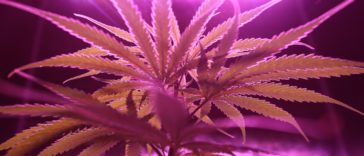This website is informational and cannot diagnose or treat illness or disease. Medical marijuana should be used under the direction of a licensed healthcare provider. This site contains advertisements. If you click a link and make a purchase, MarijuanaMommy.com may receive a commission.
The Developing Methods of Cannabis Administration
Marijuana use is more widely accepted than ever. Twenty-nine states in the US allow the legal use of medicinal marijuana. As marijuana becomes more commonly accepted, methods of cannabis administration are expected to expand. This article explains how to use marijuana.
Marijuana is being used to help treat diseases like multiple sclerosis, cancer, nausea, PTSD, epilepsy, chronic inflammation, autoimmune disease, concussion, Alzheimer’s, and chronic pain. Studies have shown that cannabis is also highly effective against neuropathic pain or neuralgia, which is characterized by damaged or injured nerve fibers.
Cannabis is still often treated casually but is actually a complex plant containing over 400 chemicals. Medical marijuana also poses fewer risks than opiates and many other pharmaceuticals, as there’s never been a fatal overdose from cannabis.
There are multiple ways to administer marijuana. Common methods of cannabis administration include smoking, consuming it orally or via a mucus membrane, such as sub-lingual (under the tongue or via a suppository). Cannabis ointments can also be administered topically.
Here’s how to use marijuana.
SMOKING
Smoking marijuana is the most common way to consume the plant, and for many, it’s the only option. However, smoking is should be avoided if possible. Smoking marijuana exposes the user (and those in their surroundings) to carcinogens in the smoke. The negative health effects are not caused by the cannabis but are caused by the smoke. Smoke is unhealthy, it doesn’t matter what substance is burned.
Even though it poses more health risks, smoking cannabis is a convenient and inexpensive method of administration. One of the greatest benefits of smoking cannabis is that the health effects are nearly immediate.
VAPOR
Vaporizing marijuana, like smoking, offers the same immediate benefits of inhalation. When inhaled, cannabinoids quickly enter the bloodstream. Vaporizers are small devices that heat the cannabinoids into a medicated vapor which can then be inhaled. Vaporization is a healthier consumption method because it does not elicit cancer causing smoke. Vaporization is the healthiest choice when instant relief is needed. However, cannabis vaporizers are expensive and require maintenance.
EDIBLES
The term “edibles” is used when cannabis is ingested orally. The effects of orally consumed cannabis take significantly longer to set in, compared than inhalation. Orally consumed cannabis can take up to four hours to begin working. The effects of orally consumed cannabis also last longer than smoking or vaporization.
Caution should always be used with cannabis, but extra caution should be used when consuming cannabis orally. The cognitive side effects are more intense when eating cannabis.
CANNABIS CONCENTRATES
Cannabis concentrates can be extracted from the cannabis plant. Depending on how the cannabis oil is extracted, concentrates can be taken orally, smoked, or used topically. Cannabis concentrates are extremely potent. The dose can be accurately measured which is difficult to do when smoking dried herb.
CANNABIS INFUSED BUTTER/OIL
Canna-butter is also easy to measure and administer in small doses. Canna-butter is butter or ghee infused with cannabis. Cannabinoids are lipophilic, or fat-loving molecules. They easily bind to butter or oil. Cannabis infused butter or oil is easily digested by the gastrointestinal system. Cannabis oil can be made at home or purchased at a dispensary. Canna-oil and canna-butter can be used to make edibles, injected into capsules, can be eaten alone, or made into a topical ointment.
TINCTURES
Cannabinoids extracted into alcohol or glycerin are called tinctures. The process is similar to the making cannabis oil, but uses a different solvent. Similar to cannabis oil and canna-butter the dosage of tinctures can be accurately measured. This method helps in cases where the dosage may need to be changed as tinctures are flexible to such changes. Cannabis tinctures can be used to make edibles, injected into capsules, can be eaten alone, or made into a topical ointment.
TOPICALS
Cannabis extracts can be used topically with no mind-altering side effects. Pain News Network has reported the “good success using topical ointments.” Topicals are excellent for relieving localized body pain. Topicals are often made using a cannabis concentrate or cannabis oil.
CONCLUSION
Marijuana can offer a variety of benefits. Similar to all other substances, cannabis does have risks and dangers. Medical marijuana isn’t for everyone. Please consult your licensed healthcare provider to discuss treatment.
Author Bio
Mary Alusin believes in the power of medical marijuana. She has written several articles about this controversial plant, relaying its benefits to other people. She hopes that one day, the use of this plant will be legalized all over the world.









